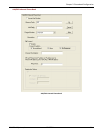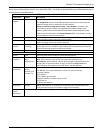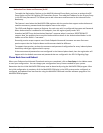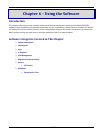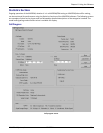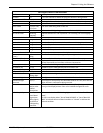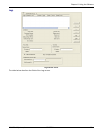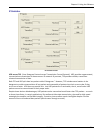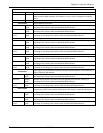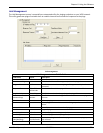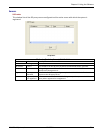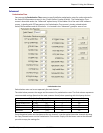
Chapter 6: Using the Software
Multi-Tech Systems, Inc. MVPGSM 68
Call Progress Details: Field Definitions (continued)
Field Name Values Description
Supplementary Services Status
Call on Hold alphanumeric Describes held call by its IP address source, location/gateway identifier,
and hold duration. Location/gateway identifiers come from Gateway
Name field in Phone Book Configuration screen of remote VOIP.
Call Waiting alphanumeric Describes waiting call by its IP address source, location/gateway
identifier, and hold duration. Location/gateway identifiers come from
Gateway Name field in Phone Book Configuration screen of remote
VOIP.
Caller ID “Calling Party
+ identifier”;
“Alerting Party
+ identifier”;
“Busy Party
+ identifier”;
“Connected
Party +
identifier”
This field shows the identifier and status of a remote VOIP (which has Call
Name Identification enabled) with which this VOIP unit is currently
engaged in some VOIP transmission. The status of the engagement
(Connected, Alerting, Busy, or Calling) is followed by the identifier of a
specific channel of a remote VOIP unit. This identifier comes from the
“Caller Id” field in the Supplementary Services screen of the remote VOIP
unit.
Call Status fields
Call Status hangup, active Shows condition of current call.
Wireless Module
Status
ready,
registering
This displays the current status of the wireless module on this channel.
SIM Registration
Status
“registered
to…”, not
registered
This shows the registration status of the module on this channel.
Signal Strength 0-99 0-3 is an insufficient signal for use.
4-9 is a low strength signal that is usable.
10-19 is a medium strength and is a good connection.
20-31 is a high strength and is an excellent connection.
99 means there is no signal at all.
Note section
(Options & Signal Strength Ranges)
“SC” stands for Silence Compression. With Silence Compression enabled,
the MultiVOIP GSM will not transmit voice packets when silence is
detected, thereby reducing the amount of network bandwidth that is
being used by the voice channel.
“FEC” stands for Forward Error Correction. Forward Error Correction
enables some of the voice packets that were corrupted or lost to be
recovered. FEC adds an additional 50% overhead to the total network
bandwidth consumed by the voice channel.
Reset (button) - Clicking this button will reset the channel including the wireless module.
Disconnect (button)
-
Clicking this button will disconnect the current connection on this
channel.




